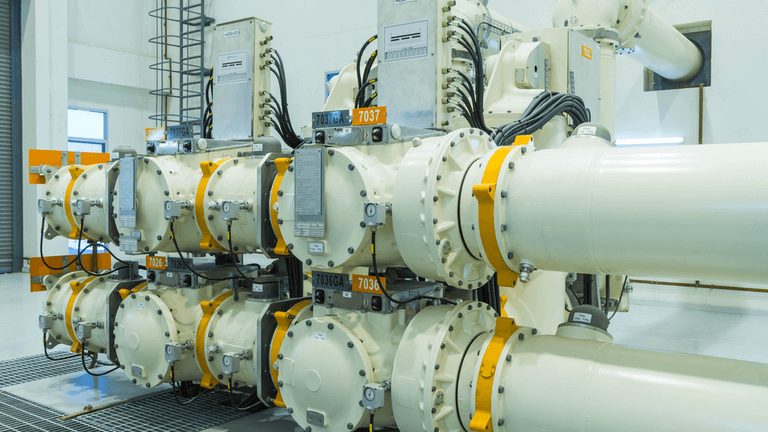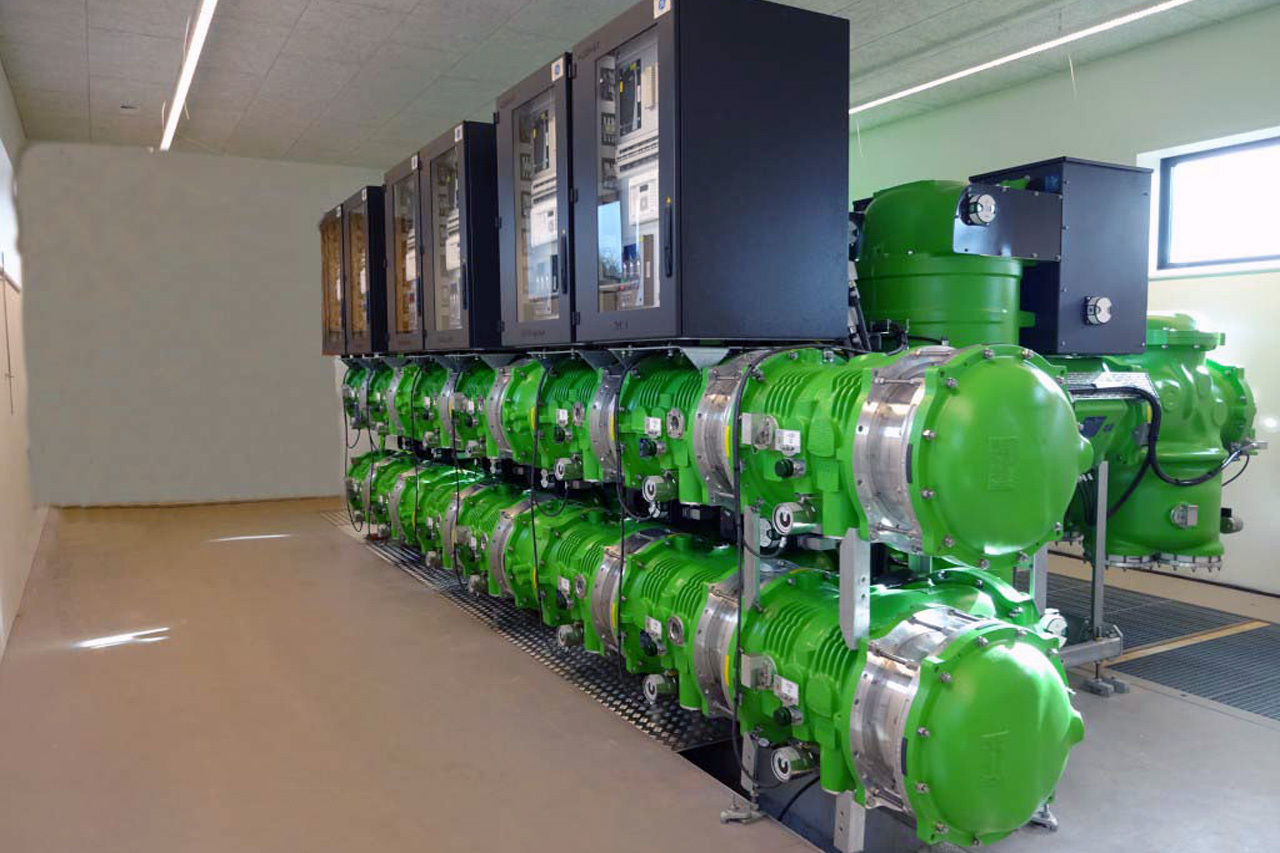
Photo by Jakit17, Dreamstime (source from T&D world website for display only)
Comparison between GIS and AIS in environment impact:
In this post, we examine the important factors of the effects of SF6 gas-insulated switchgear(GIS) on the environment compared to other switchgears installed in high voltage substations with air insulation(AIS).
A comparison of AIS, GIS from an environmental point of view, must consider a number of factors, both in regard to the influence of the substation on the environment as well as the influence of the environment on the substation. The impact of the environment includes the following factors:
High voltage substation aesthetics:
An AIS substation, depending on its location may require appropriate aesthetic treatment, usually at its boundary/fence line, to blend into surroundings. An outdoor GIS installation presents a considerably smaller footprint and can be made to look more like an industrial installation. If aesthetic treatment is required, this will have to conceal a much smaller area. While from a distance MTS(Mixed Technology Switchgear) looks more like an AIS, the area occupied is closer to a GIS installation; thus the potential cost of any aesthetic treatment will definitely be less than for an AIS and closer to GIS. Where GIS is installed in a building, the building itself will provide aesthetic treatment.
Nature:
Due to the compact design of GIS the following impact on their natural surrounding can be reduced:
- construction site dimensions – minimize
- excavations and backfills,
- impact on flora and fauna,
- loss of topsoil,
- erosion process,
- impact on surface and groundwater sources.
GIS Noise:
Some air-insulated circuit breakers and load break switches may produce a high-level momentary noise when operated. Other noise sources from switching equipment in a substation include corona discharges, arcing during operation of switches, etc. Noise alteration treatment is mostly not required.
GIS installations produce lower levels of noise due to the fact that equipment is completely enclosed, and the SF6 gas in the enclosures is a very efficient sound absorber. New arc interruption technologies in SF6 gas that require lower energy levels have resulted in the development of smaller, spring-operated mechanisms that generate lower levels of noise.
Gas Leakage:
The fluid employed in all three technologies (SF6 gas or a combination and oils used in hydraulic mechanisms or as lubricants) can under certain circumstances leak into the environment. SF6 is deemed as a greenhouse gas (SF6 having the greenhouse effect 22200 times higher than that of the same mass of CO2) and all necessary precautions are taken by both manufacturers and users to restrict design and handling leaks.
All technologies are designed to minimize gas leaks. However, when comparing among the technologies, the length of sealed surfaces might differ within AIS, GIS. The total length of SF6 seals is the greatest within GIS, whereas in AIS some oil-filled equipment might be installed. However, consideration should be given to the fact that GIS equipment can be installed indoors, thus minimizing exposure to the environment and extending the life of the sealing systems.
For more information about SF6 gas leakage please read this article.
In addition to the above, detailed procedures of installation, service, maintenance, repair, and proper disposal are described by the manufacturer in order to minimize handling losses as well.
Currently, due to the destructive effect of SF6 gas on the ozone layer, environmentally friendly gases are used, which you can see in this article.
National guidelines on reporting greenhouse gas emissions, which include design-related leakage as well as service-related handling emissions, are already installed in a lot of countries.

Photo from GE company website non SF6 gas GIS for display only
Electromagnetic fields (EMF)/Electromagnetic Compatibility (EMC):
In GIS the electric field levels in the immediate vicinity of the substation are negligible due to the shielding effect of the earthed enclosure. In AIS the electric field levels inside the substation fence are more or less of the same intensity as the electric fields associated with the incoming and outgoing transmission lines. Magnetic fields are mainly related to the nominal current and the physical arrangement (distances, enclosures, and phase arrangements), but not significantly influenced by the technology. The impact of EMC outside the substation is independent of the technology.
Climatic conditions:
All technologies must be designed to cope with the specific climatic conditions (temperatures, humidity, ice, rain or snow, wind, solar radiation, etc.) at the place of installation. There is no significant difference between technologies in this respect. However, GIS solutions allow indoor installations where the influence of climatic conditions can be limited only to outdoor parts (bushings and bus ducts).
Pollution:
The influence of pollution on switchgear is proportional to the number of insulators and bushings in that particular switchgear. Consequently, more compact arrangements in GIS present some distinct advantages. Naturally, indoor GIS offers greater advantages compared to outdoor equipment (AIS, or GIS).
Corrosion:
All outdoor-installed equipment is subject to environmental factors, including even exposure to extreme conditions such as acid rain, marine environments or man-made pollution (chemical releases from nearby industries), which can lead to corrosion of apparatus elements and premature failures.
For more information about the altitude correction factors please read this article.
Naturally, indoor GIS presents significant advantages against outdoor equipment (AIS, GIS) when using such criteria.
Seismic conditions:
Regardless of the technology, if the substation is installed in an area with seismic activities, proper engineering design, and seismic testing in accordance with the relevant standards must be used.
However, a statement may be made that an AIS is likely more vulnerable to damage during an earthquake due to individually installed structures and foundations, while the GIS due to its structure may behave more robustly. Depending on its design and testing (including foundations), MTS(Mixed Technology Switchgear) behavior under seismic conditions may be better than AIS; however GIS installations have the best performance due to the compactness and low center of gravity.



